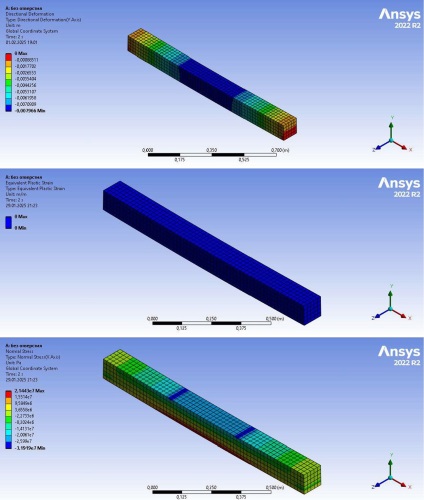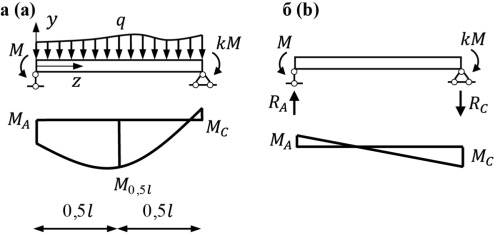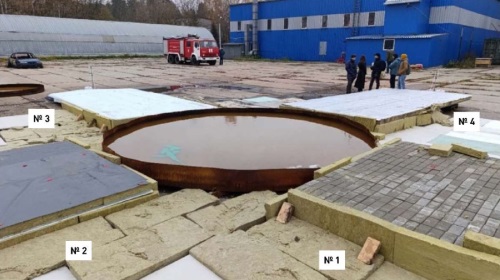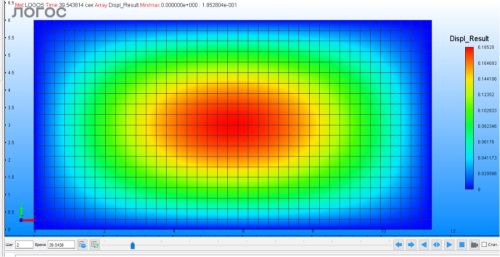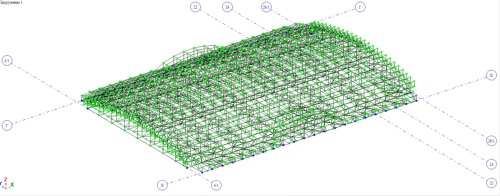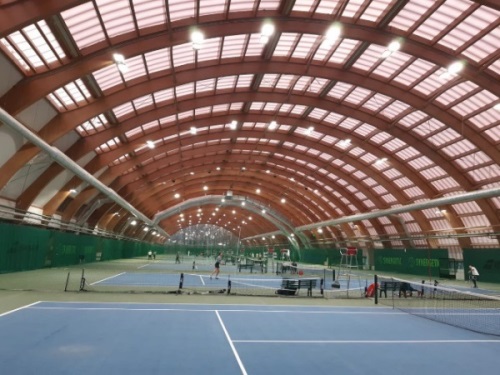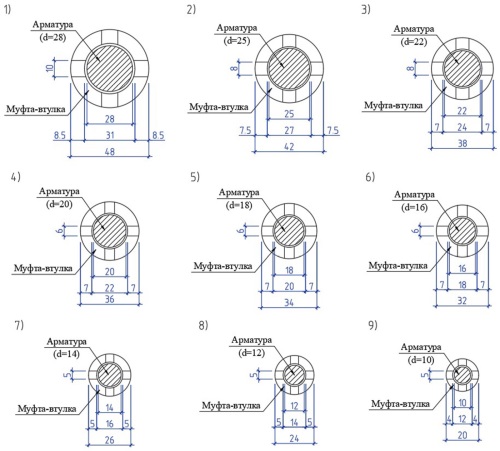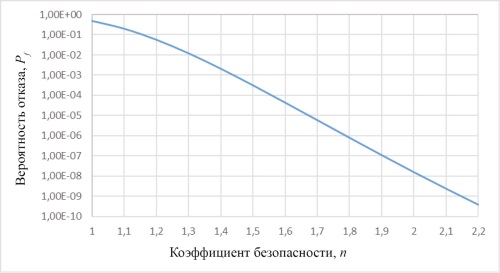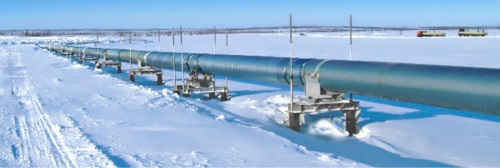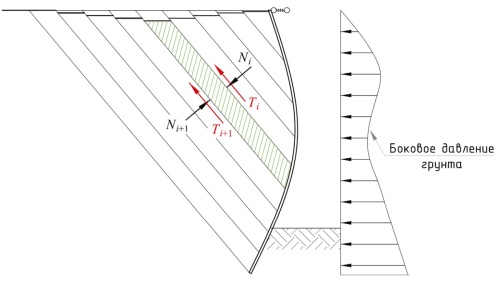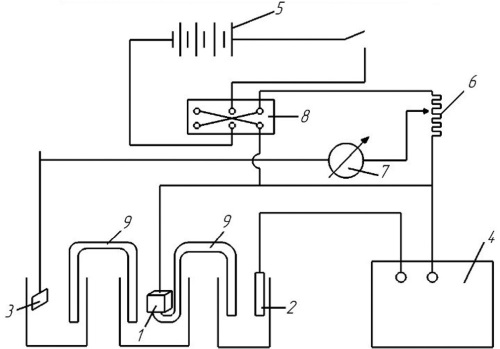
The journal “Bulletin of the Scientific Research Center of Construction” publishes the results of theoretical and experimental studies on building materials, structures, structures, bases and foundations under static and dynamic influences.
You can subscribe to the printed version of the magazine on the website of the United Catalog “Press of Russia” www.pressa-rf.ru and through the online store “Press by Subscription” https://www.akc.ru
Subscription index 36569
To subscribe, follow the link: https://www.pressa-rf.ru/cat/1/edition/t82868/
https://www.akc.ru/itm/vestnik-nit_s-stroitelstvo/
Extract from the register of registered mass media as of 10/19/2021.
ISSN 2224-9494 (Print)
ISSN 2782-3938 (Online)
The Bulletin of the Scientific Research Center "Construction" (Print) has been included in the list of Higher Attestation Commissions since October 3, 2019 in scientific specialties:
2.1.1 - Building structures, buildings and structures (technical sciences);
2.1.2 - Foundations and foundations, underground structures (technical sciences);
2.1.5 - Construction materials and products (technical sciences).
In the List of Higher Attestation Commission dated October 27, 2025 No. 628.
Included in category K2 of the List of Higher Attestation Commission.
Journal DOI https://doi.org/10.37538/2224-9494
Current issue
BUILDING CONSTRUCTIONS AND FACILITIES
Introduction. This paper explores the efficiency of using carbon fiber reinforced polymer plates to reinforce defective wooden structures.
Aim. To assess the impact of different reinforcement solutions on the distribution of stress-strain state.
Materials and methods. Numerical modeling was applied using ANSYS simulation software. Wooden beams with typical defects localized in the upper and lower areas of the cross-section were selected for modeling, which provides a comprehensive assessment of the impact of defects on structural integrity.
Results. Options for reinforcement are considered, which involve the use of carbon fiber plates in combination with epoxy resin, thereby significantly reducing compressive and tensile stresses, as well as plastic deformation. Seven different constructional solutions were compared, and the results revealed the optimal schemes for load redistribution and beam deflection reduction. Particular attention was paid to nonlinear wood deformation, which enables the real operating conditions to be reproduced more accurately.
Conclusions. The data obtained demonstrate the high efficiency of the proposed reinforcement solution, thus opening up prospects for further experimental research, practical application in the reconstruction of wooden structures, as well as the development of new regulatory guidelines in the field of construction technologies. In addition, the study reveals the potential of modern computer analysis methods in solving complex engineering problems related to the restoration of damaged wooden structures, thus enabling the optimization of design solutions and reduction of repair costs.
Introduction. In the ongoing code of practice for steel structures, the methodology for calculating the plane bending stability of beams is undoubtedly regarded as its’ weak point. Due to the limitations of the method, the calculation results often do not agree with numerical calculations and studies. The normative calculation method uses a three-factor formula, thus providing for the calculation of simple cases only. While the use of steel structures for various needs is increasing, design codes remain behind the present demands thereby often failing to follow the calculations and provide sufficient answers to questions. Apparently, the reason lies in the fact that there are no modern developments in the field of stability theory. No previous results are revised and no attempt is made to improve the current theory. Moreover, in the case of beam theory, a dead end seems to have been reached.
Aim. To develop a more advanced approach in resolving the bending-torsional loss of beam stability, as well as to make a unified equation of bending stability coefficient.
Materials and methods. The bifurcation problem in V.Z. Vlasov theory for thin-walled rods was revised, and a formula in deformation theory was developed based on Merchant’s formula, exponential and degree functions.
Results. An improved methodology for calculating the stability of the plane bending form of a beam, as well as a new set of coefficients and equations for solving the problem are proposed. These solutions complement and extend SP 16.13330.2017.
Conclusions. The methods and standards for the calculation of steel structures in terms of the overall stability of beams can be extended to comply with contemporary requirements.
Introduction. New advanced roll materials that can be used to create a fire barrier on roofs as a protective layer without compromising their fire safety characteristics are becoming available on the market. However, the use of these materials is restricted by current regulations. Therefore, clarifying the requirements for fire barriers and their protective layers should facilitate the use of lighter solutions for installing fire barriers.
Aim. To refine the requirements for fire barriers and their protective layers, which provide for modern lightweight solutions used for installing fire barriers on roofs.
Materials and methods. Field tests were conducted to study three samples of roofing systems, both currently in use and new systems.
Results. The parameters of heat flows recorded at the boundaries of fire barriers have been determined. The need to develop a standard testing method for fire barriers on roofs has also been identified. The obtained data indicate that certain combustible roofing materials can be used in the construction of the upper layer of fire barriers (above the waterproofing membrane) while a combustible lower layer (below the waterproofing membrane) cannot be used with a non-combustible upper layer.
Conclusions. The results of the study suggest requirements for modern materials used in the construction of protective layers for fire barriers on roofs, using the methodology developed in regulatory specifications, and expanding the scope of application for modern materials.
Introduction. This ongoing study considers the dynamic characteristics of building structures with cracks in concrete when monitoring using vibration diagnostics. Previously developed methods provided an assessment of the reduction in stiffness and natural frequency in structural elements. Critical values of frequency and corresponding deformation modulus were then determined; when reached, further operation of the building would be impossible. An original approach to determining the critical value of the natural frequency and the corresponding deformation modulus of concrete is described.
Aim. To determine the critical natural frequency of a building section (floor/wall), beyond which the building can no longer be exploited.
Materials and methods. Values of the critical natural frequency and the corresponding value of the deformation modulus of the slab and wall were obtained using examples. The impact of combined boundary conditions, i.e., the combination of hinged supports and rigid fixing, on the natural frequencies of various building structures is examined.
Results. The obtained calculation results, with regard to vibration diagnostics, indicate a margin of strength and load-bearing capacity for the slab, while the wall has sufficient strength, albeit with an insignificant margin of load-bearing capacity.
Conclusions. Compared to the approach outlined in the EMERCOM methodology, the proposed method is advantageous in calculating the critical value of the natural frequency and the deformation modulus of concrete in building structures.
Introduction. The article focuses on the challenges of analyzing the susceptibility of unique bar structures and structures with increased level of responsibility to progressive collapse, as well as the methodology for analyzing the reliability of these structures.
Aim. To develop an algorithm for assessing the susceptibility of unique structures with increased level of responsibility to avalanche collapse under various calculation loads.
Materials and methods. The algorithm for calculating numerical indicators of structural reliability, in particular, safety characteristics, is considered. The upper numerical reliability criterion, which characterizes the failure probability of the entire group of the most responsible elements, is determined, along with the lower reliability level, i.e., the minimum value characterizing the reliability of a rod from the group of the most responsible elements of the structure. The proposed methods are implemented in the MATLAB programming language in the form of an author software. The verification of the proposed method was carried out in the design of the restoration project for the Ilyichevets sports complex in Mariupol.
Results. The methods proposed provide for determining the group of the most responsible elements of the system, the failure of which will inevitably cause the onset of progressive collapse, rather than performing calculations by blind trial and error. A numerical characteristic of the susceptibility of a structure to avalanche collapse, Δβ (system survivability reserve), is proposed.
Conclusions. The calculation results proved that the theoretical results obtained were nearly completely consistent with the data recorded during the inspection of the roof structures of the Ilyichivets sports complex in Mariupol, thus confirming the accuracy of the proposed algorithms for calculating the numerical reliability indicators of structural elements.
Introduction. According to Federal Law No. 384 and others, buildings with large-span load-bearing structures are required to be inspected every 5–10 years, which is particularly critical for wooden structures. During installation, the moisture content of the wood increases compared to its manufacturing readiness. In the first year of wooden structure operation, during the heating season, the air humidity in the room may decrease below the permissible 40 %, causing intense shrinkage of the wood, which, in turn, provokes the appearance of cracks in structures due to uneven distribution across the cross-section. In this paper, a tennis center is considered that was first covered with prefabricated double-hinged arches with a span of 39 m and rigid joints of the TSNIISK system. Scheduled inspections of load-bearing structures were carried out by employees of the Research Institute of Building Constructions (TSNIISK) named after V.A. Koucherenko in 2025.
Aim. To perform a comprehensive inspection for assessing the condition and serviceability of structures after five years of operation.
Materials and methods. A comprehensive inspection of the support areas and rigid joints of the arches was carried out, with defects being recorded. The inspection also included measurements, checks on operating conditions, wood moisture content, the condition of fire protection, etc.
Results and conclusions. Cracks up to 100 mm deep are observed in the arches due to wood shrinkage. The indoor air humidity is 20 %, which is below the required 40 %. Wood moisture content is 10 % with a moisture difference of approximately 2 % across the depth, indicating that shrinkage process has been halted. Some rigid joints have cracks in the anchoring zone. Through cracks caused by shrinkage are detected in a single joint. Thus, instrumental monitoring and testing to confirm the strength of the joints are required. As the fire protection layer has been damaged in the leaking areas of the roof, the outline of the roof and the roofing material in the leaking areas should be changed. Provided that an automatic air humidification system is installed, the roof leaks are repaired, and the joints between the arches are structurally reinforced, the arches can operate effectively.
Introduction. The process of connecting reinforcing bars (rebars) is of high importance, as it affects the quality of the manufactured structures. This paper discusses a method for welded splicing of rebars using sleeve couplings, designed as one of the alternatives to welded and mechanical connections of reinforcing bars permitted by regulatory documents.
Aim. To examine an alternative method for connecting rebars, which can be used for small-scale projects and remote construction sites, including cases where delivery of equipment for thread cutting or press-fitting connections is difficult and economically unjustified, as well as in seismically hazardous areas.
Materials and methods. Normative documents regulating the connection of reinforcing bars are reviewed, including requirements for connecting reinforcing bars in seismically hazardous areas. Schemes for welded splices of reinforcing bars using sleeve couplings are presented.
Results. Schemes for connecting reinforcing bars of different diameters with various welded splices are proposed. A calculation example is provided to confirm the feasibility of the proposed approach.
Conclusions. The method provided in this paper is a suitable solution for welding reinforcing bars, which can be applied in construction projects in seismically hazardous areas.
Introduction. This paper covers the classification and reliability of construction structures at nuclear power plants; the reliability of reinforced concrete elements of fire protection systems that prevent the spread of hazardous fire factors is assessed. Such structures were shown to be highly reliable in terms of normal operating loads, so their failures may not be considered in reliability analyses of safety systems and safety analyses of nuclear power plants.
Aim. To demonstrate that the design requirements for nuclear power plant buildings and structures ensure a high level of reliability for their structural components, and therefore measures to protect these components from failure due to common causes are not required.
Materials and methods. The reliability assessment of reinforced concrete structural elements in buildings and structures at nuclear power plants was performed in accordance with the recommendations of RB 100-15 using the two-moment method.
Results. According to the study results and as required by clauses 1.2.12 and 1.2.15 of NP 001-15, elements of reinforced concrete building structures with a failure probability typically exceeding 10–3 may not be considered as an additional independent failure or initiating event in the analysis of design basis accidents. It is noted that measures to ensure the fire resistance of reinforced concrete structures in fires are aimed at protecting the reinforcement from exceeding the temperature at which its deformation and strength properties may change, which can lead to a loss of load-bearing capacity of reinforced concrete elements. Thus, while maintaining the properties of reinforcement, the reliability level of reinforced concrete elements is preserved, thus enabling structural failures to be disregarded in reliability analyses of fire protection systems.
Conclusions. The high level of reliability of nuclear power plant structures, ensured by compliance with design standards, provides a basis for not considering their failures in system reliability and safety analyses.
FOUNDATIONS, UNDERGROUND STRUCTURES
Introduction. Contemporary climate change is causing changes in the temperature of permafrost soils. These changes significantly affect the condition of the foundations of civil and industrial buildings and structures leading to their deformation and destruction. The degradation of permafrost currently occurring and expected to continue over the next 15–20 years requires improvements in thermal management technologies and additional cooling of foundation soils used in Principle 1 (or the Passive method) for construction on permafrost soils.
Aim. To examine various methods for thermal stabilization of frozen soils in cryolite zones, the operation principles of these methods, along with examples of their application in diverse climatic conditions.
Results. The operating principles of domestic and foreign thermal stabilizers are considered. The key strengths and weaknesses of modern cooling device technologies are analyzed. Demand and supply for thermal stabilizers on the Russian market are assessed. A unified approach to their use in cryolite zones is justified.
Conclusions. Geotechnical calculations require clear scenarios for specific small climatic regions. Additionally, reference data on soil temperatures, which are essential for designing and monitoring buildings and structures, are unavailable. Although thermosyphon foundations have been used successfully for over 40 years, they could soon become obsolete due to global warming. Therefore, technical regulations for the construction of thermosyphon foundations should be developed and adopted. These regulations would cover the design, construction, and operation of thermosyphon foundations.
Introduction. The most commonly used methods for designing flexible retaining walls and shoring of excavations are the ones based on classical theories. Such approaches assume a linear or piecewise linear distribution of active earth pressure. However, real retaining structures under load are subject to deformation, which significantly affects the redistribution of lateral earth pressure along the wall height within the collapse prism. The article discusses the verification of the previously proposed inclined block method, that considers the redistribution of lateral earth pressure and calculates flexible retaining structures taking into account the actual occurrence of stress-strain state in the soil mass. Practical recommendations for its application are provided.
Aim. To verify a new numerical analysis method for determining lateral earth pressure along with developing practical recommendations regarding its redistribution in the active zone for flexible retaining structures.
Materials and methods. Calculated data obtained using the proposed inclined block method were thoroughly compared with experimental research results. An algorithm was developed for applying correction factors that take into account lateral pressure redistribution, with demonstrations using specific calculation examples.
Results. High correspondence between calculated and experimental data on lateral earth pressure distribution has been established. Minor differences between the calculated and experimental values can be explained by the influence of friction forces at the wall–soil interface. As a comparison, the difference between the calculations using the correction factor tables and the inclined block method (implemented in specialized software) is less than 3 %, which verifies the reliability of the proposed approach.
Conclusions. The results obtained indicate the efficacy of the proposed inclined block method for calculating the pressure on flexible retaining structures with upper strut fastenings depending on their deformations. A comparative analysis of experimental data with calculated results showed a high degree of correspondence in the distribution of lateral earth pressure. The practical recommendations developed thus enable the redistribution of lateral pressure to be taken into account with sufficient accuracy without the use of complex geotechnical software packages, which considerably simplifies engineering calculations.
Introduction. The Norilsk renovation program envisages comprehensive changes to the urban environment and engineering infrastructure in the coming years, including the construction of new residential buildings, kindergartens, schools, clinics, as well as the restoration of buildings of historical value. The City of Murmansk also plans to construct over 400,000 square meters of housing, kindergartens, and related infrastructure in the near future.
Aim. To summarize technical solutions used for bases and foundations in residential buildings in Norilsk and Murmansk, to consider all complicating factors related to geotechnical design, and to review recommendations on the most appropriate technical solutions for new residential buildings in these cities.
Materials and methods. The experience in constructing residential buildings in Norilsk and Murmansk is examined using literary and archival data, as well as information from other open sources in the media on the Internet. Data on emergency situations in residential buildings is provided, and conclusions are drawn about their causes related to bases and foundations.
Results. Summary recommendations for adopting optimal technical solutions for bases and foundations when designing residential buildings in Norilsk and Murmansk are provided from the experience of JSC Research Center of Construction.
Conclusions. For sustainability and reliable operation of residential buildings in Norilsk and Murmansk, all technical decisions regarding foundations and methods of preparing bases should consider the long-term experience of design and construction in these regions thus being supported by reliable data from engineering and geological surveys. Furthermore, calculations of the mechanical and thermal interactions of buildings with foundation soils in accordance with the requirements of current regulatory documents should be used.
BUILDING MATERIALS AND PRODUCTS
Introduction. The paper considers possibilities for improving the physical and mechanical properties of special concretes, including heat-resistant concrete, gypsum concrete for manufacturing wall panels for industrial and civil buildings, by modifying them with lime.
Aim. To examine the structural modification of heat-resistant concrete and gypsum concrete for improving their physical and mechanical properties and increasing their durability.
Materials and methods. A finely ground additive, IM-2201 spent catalyst, was added to the heat-resistant concrete mixes. Slaked lime was used as a process activator at a concentration of 10 %, causing an increase in the compressive strength of the tested materials compared to products of the same composition with no lime added. An additive in the form of 5 and 10 % quicklime was introduced to increase the strength of gypsum concrete made from high-strength gypsum. The electrode potentials of steel in high-strength gypsum were measured.
Results. Compressive strength tests on samples of heat-resistant concrete made from Portland cement with 10 % added slaked lime revealed a strength of 32 kgf/cm2. Electrochemical studies of steel corrosion in gypsum concrete indicated that adding 10 % quicklime to gypsum concrete not only increases the strength of products but also contributes to anti-corrosion processes.
Conclusions. Heat-resistant Portland cement concretes added with IM-2201 spent catalyst and 10 % slaked lime, impregnated with 30 % orthophosphoric acid, have physical and thermal properties satisfactory for concrete operation at 800 °C. Steel reinforcement in gypsum concrete is protected by adding ground quicklime to the gypsum concrete as 10 % of the weight of the gypsum, thus enabling its use in the production of gypsum concrete panels in industrial and civil buildings.
LIFECYCLE MANAGEMENT OF CONSTRUCTION PROJECTS
Introduction. The digitalization of the construction industry involves a transition from traditional text-based standards to SMART (Standards Machine Applicable, Readable and Transferable) standards. Machine-interpretable standards that enable systems to independently interpret and apply regulatory requirements are a pressing priority.
Aim. To explore the implementation of machine-interpretable standards in quality assessment processes for construction products and structural designs, along with related issues; to present practical benefits of applying the standards.
Materials and methods. An ontology describing key material parameters and their interrelationships was developed to provide an automated analysis of rolled reinforcement test data. A system of machine-interpretable documentation was implemented in the StatBIM platform. Data from laboratory reports were converted into a structured JSON-LD format with semantic markup for subsequent automatic verification of compliance with standards.
Results. The implementation of machine-interpretable standards in the StatBIM platform has reduced the processing time for rolled reinforcement test results by 70% and completely eliminated errors associated with manual data entry. The system demonstrated its ability to automatically detect non-compliance with standards, for example, in terms of tensile strength according to GOST 34028-2016.
Conclusions. The application of machine-interpretable standards in practice confirmed their high efficiency for automating quality control in the construction industry. Their widespread implementation requires a comprehensive approach, including the development of open ontologies, training of specialists, and the creation of an adapted regulatory framework, which will contribute to technological sovereignty and the digital transformation of the industry.
Announcements
2025-12-10
Съезд (отчетно-выборное собрание) Общероссийской общественной организации «Российская инженерная академия»
4 декабря 2025 года состоялся Съезд (отчетно-выборное собрание) Общероссийской общественной организации «Российская инженерная академия»
| More Announcements... |
ISSN 2782-3938 (Online)



